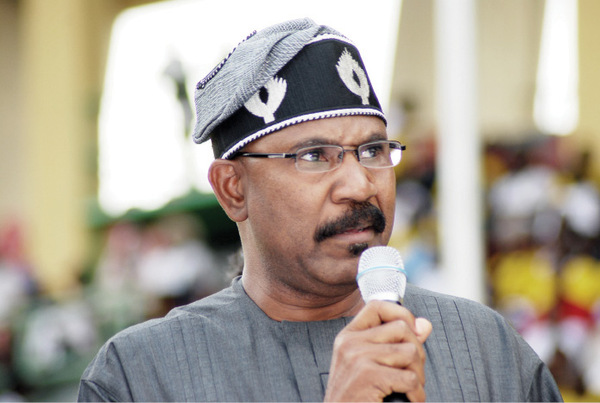Last week, the federal government approved the indigenous production of satellites in the country to facilitate and boost Internet broadband penetration.
The satellite production and design, according to the minister of state for Science, Technology and Innovation Henry Ikechukwu Ikoh, will be achieved through Public Private Partnership (PPP) in line with Executive Order No.5.
The presidential executive order seeks to boost local production and ensure that Nigeria relies less on imports.
Ikoh who made this announcement during the South-South dialogue between government and stakeholders in the Science, Technology and Innovation ecosystem in Port Harcourt, said indigenous production of satellites would ensure Nigeria moves from a resource-based economy to a knowledge and innovation driven economy.
- Tinubu, Wike’s camps meet to finalise deal on 2023
- Recapitalisation, other major events that shaped pension sector in 2022
He assured that government will ensure the success of technology development in the country and that technological innovations and the outputs are of World-class standards.
What is a satellite?
A satellite is basically a self-contained communications system with the ability to receive signals from Earth and to retransmit those signals back with the use of a transponder—an integrated receiver and transmitter of radio signals.
A satellite has to withstand the shock of being accelerated during launch up to the orbital velocity of 28,100 km (17,500 miles) an hour and a hostile space environment where it can be subject to radiation and extreme temperatures for its projected operational life, which can last up to 20 years. In addition, satellites have to be light, as the cost of launching a satellite is quite expensive and based on weight.
The main components of a satellite consist of the communications system, which includes the antennas and transponders that receive and retransmit signals, the power system, which includes the solar panels that provide power, and the propulsion system, which includes the rockets that propel the satellite.
A satellite needs its own propulsion system to get itself to the right orbital location and to make occasional corrections to that position.
A satellite’s life span is determined by the amount of fuel it has to power these thrusters. Once the fuel runs out, the satellite eventually drifts into space and out of operation, becoming space debris.
A satellite in orbit has to operate continuously over its entire life span. It needs internal power to be able to operate its electronic systems and communications payload. The main source of power is sunlight, which is harnessed by the satellite’s solar panels.
Communication satellites range from microsatellites weighing less than 1 kg (2.2 pounds) to large satellites weighing over 6,500 kg (14,000 pounds).
Satellites operate in three different orbits: low Earth orbit (LEO), medium Earth orbit (MEO), and geostationary or geosynchronous orbit (GEO). A signal that is bounced off a GEO satellite takes approximately 0.22 second to travel at the speed of light from Earth to the satellite and back. This delay poses some problems for applications such as voice services and mobile telephony. Therefore, most mobile and voice services usually use LEO or MEO satellites to avoid the signal delays resulting from the inherent latency in GEO satellites. GEO satellites are usually used for broadcasting and data applications because of the larger area on the ground that they can cover.
Launching a satellite into space requires a very powerful multistage rocket to propel it into the right orbit. Satellite launch providers use proprietary rockets to launch satellites from sites such as the Kennedy Space Center at Cape Canaveral, Florida, the Baikonur Cosmodrome in Kazakhstan, Kourou in French Guiana, Vandenberg Air Force Base in California, Xichang in China, and Tanegashima Island in Japan.
The International Telecommunication Union (ITU), a specialized agency of the United Nations, regulates satellite communications. The ITU, which is based in Geneva, Switzerland, receives and approves applications for use of orbital slots for satellites. Every two to four years the ITU convenes the World Radiocommunication Conference, which is responsible for assigning frequencies to various applications in various regions of the world. Each country’s telecommunications regulatory agency enforces these regulations and awards licenses to users of various frequencies.
Nigeria’s budget for satellite technology
Daily Trust reports that the federal government earmarked N2.5 billion for the satellite project in the 2022 budget.
The total budgetary allocation for Nigeria’s space programme was N35.7 billion ($86.8 million), with NASRDA accounting for 64 per cent, NIGCOMSAT, 22 per cent, and Defence Satellite Agency (DSA), 14 per cent.
A satellite costs anything from $400,000 to $1 million to build, according Adio Sheriff, a satellite communications expert.
The federal government had previously launched a N34 billion communication satellite, but was not put into good use, according to experts.
NigComSat 1 was launched from China on May 13, 2007 but got de-orbited (failed) in November 2008. It launched the second by CGWIC of China on December 19, 2011 with a design lifespan of 15 years.
Space technology is capital-intensive – Experts
However, some argue that Nigeria’s space programme is grossly underfunded
Henry Ibitolu, a former research intern at the NASRDA, said space technology was capital-intensive but Nigeria should spend more on it to achieve meaningful results.

 Join Daily Trust WhatsApp Community For Quick Access To News and Happenings Around You.
Join Daily Trust WhatsApp Community For Quick Access To News and Happenings Around You.


